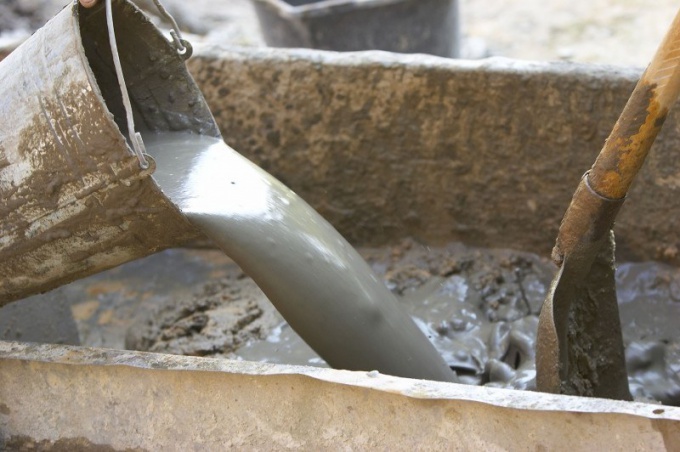You will need
- - cement;
- - aggregates (sand, gravel, etc.);
- water;
- - mortar mixer, drill with attachment or spade.
Instruction
1
For starters get dry construction cement of the desired type. Mortars are divided into 2 types: simple and mixed. Simple solutions can include such compounds as lime and cement. An example of mixed is, for example, cement-lime mortar. The solutions contain a variety of binding agents. The main such binder materials include clay, cement, lime and gypsum. Also cement mortar consists of aggregates, which are mainly small stones, sand, sawdust, etc. in addition, modern building materials market offers new components for cement mortar, giving the finished mortar strength and elasticity.
2
For any type of solution common component is water. Its share in the dry mix depends on the objectives of the prepared solution and from the treated materials. For example, limestone in the dry mixture will take a lot of water. Before starting work, remember one rule - water should be added only when all the dry ingredients of the mixture has been thoroughly mixed, otherwise the solution may be heterogeneous.
3
To all the rules to breed cement mortar, use a mortar mixer or a drill with a special nozzle. You can also use a regular shovel. For bricklaying or plastering of surfaces, dilute the cement with the sand. On one part of cement you need to take 2 or 3 parts of sand. Measure out the sand and pour it into the container slide. Then add the necessary part of the cement, then the dry mixture and thoroughly mix until smooth. Gradually pour in the water in intimate mixture and dilute it with the help of the previously described construction tools.
4
In order to pour the Foundation / floor in the construction mix you need to add gravel. To prepare this solution you need to take 1 part cement, 2 parts sand and 2 parts gravel. These proportions depend on the task ready mixes and they can be correct. Gravel, present in the solution, the monolith gives concrete greater strength. Greater amounts of clay of the sand makes the mortar more elastic, however, this concrete is not suitable for large areas, as it will become loose. For the repair of small-size sections of flooring and walls you can use a mixture with a large amount of cement.
